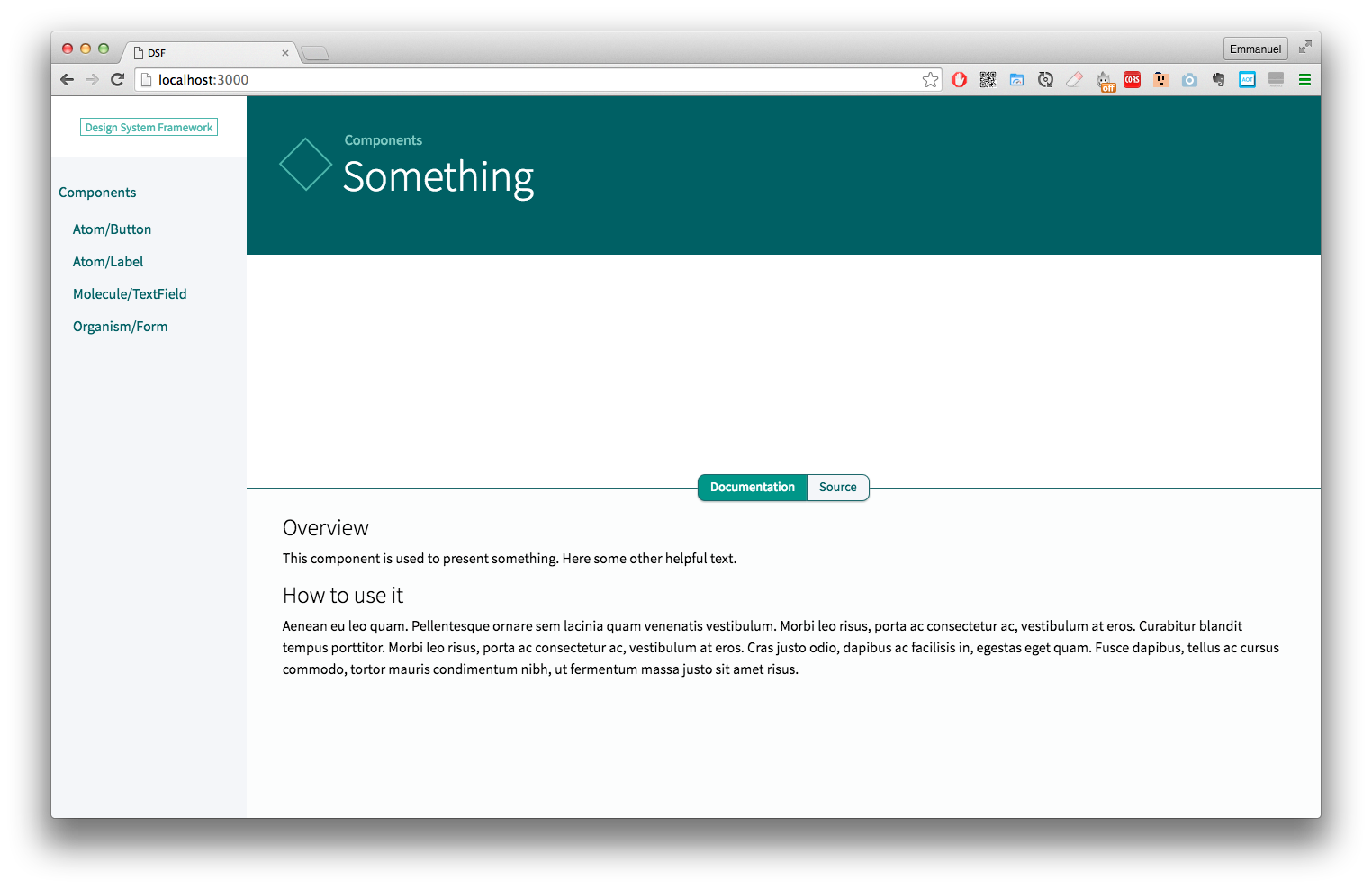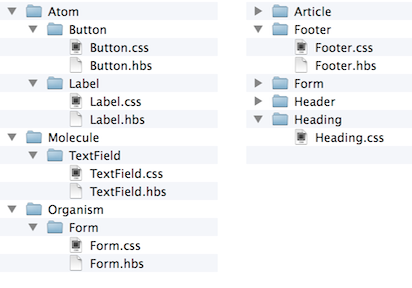Design System Framework
Build living styleguides and make sure they stay up to date.
Note: This is an alpha release, not all features are fully available
What is this ?
Design System Framework (DSF) helps developers, designers and editors to use design systems in the best way possible:
For developers
Keep sources separate
The only requirement is that you use one folder per component, the rest is up to you. Simply tell DSF how to find your HTML, CSS and JS:
{
"css": "*.css",
"html": "*.hbs",
"config": "config.json"
}No hard coded values
The sources you work on in DSF is the code you are going to use in the application code (HTML, CSS, JS). As such, templates already use variables:
This allows to never use hard coded values: they tend to be too perfect. DFS will also help you test your components with different values to make sure your components support names such as Hubert Blaine Wolfeschlegelsteinhausenbergerdorff.
Handlebars is used for templating.
The styleguide is alive
DFS does more than generate a styleguide from your sources: it actively watches you work and rebuilds anything that needs to. You should never have to touch your browser again.
For each component DFS provides always-up-to-date HTML, CSS and JS files. These files are "standalone": they contain your base code (reset.css, your favorite CSS/JS framework) and the component's code. This way you can test faster with lighter setup and cherry on the cake: make sure your components do not depend on each other (tight-coupling).
Dependency management
DFS understands your component dependencies and will always build what you need, only what you need.
Build production code
Provided a small configuration, DFS can generate the smallest files possible for production. Since it enforces the separation of components, it can easily generate 2 versions of external assets: the critical path (to be inlined) and the rest (to be loaded asynchronously).
Also:
- Makes refactoring much easier
- Reinforces re-use of components
- Backend agnostic
- Generates test files for all components
- Statistics for each component:
- code size
- dependencies
For designers and editors
Up to date documentation
An up-to-date documentation of the design system is an invaluable asset for designers and editors. By using the styleguide sources as the project sources, it's simply impossible for the styleguide to be out of date.
Quickly test copy
A living styleguide allows you to test the limits of components: does this title fit in our homepage? You can simply test your copy in an actual browser, using the actual production code with no programming knowledge needed.
Getting started
1. You need a project with all components in a single directory
If you need one, just clone this example: https://github.com/lipsumar/dsf-example-project
$ git clone https://github.com/lipsumar/dsf-example-project.git
2. Install DSF
At the root of your project, run:
$ npm install design-system-framework
3. Run DSF
$ node node_modules/design-system-framework/cli.js
To make things easier, you can setup the following npm script in your package.json:
"scripts": {
"dsf": "node node_modules/design-system-framework/cli.js"
},and simply run:
$ npm run dsf
Configuration
You can configure DSF via a file called config.json at the root of your project and for each component.
See the wiki page for config.json.

